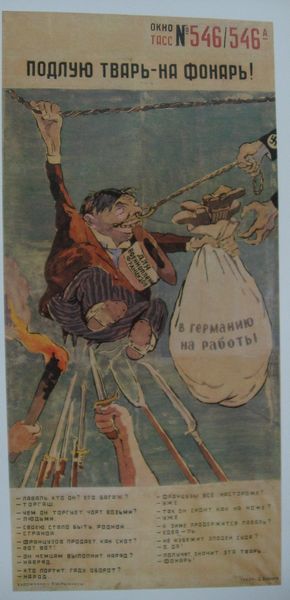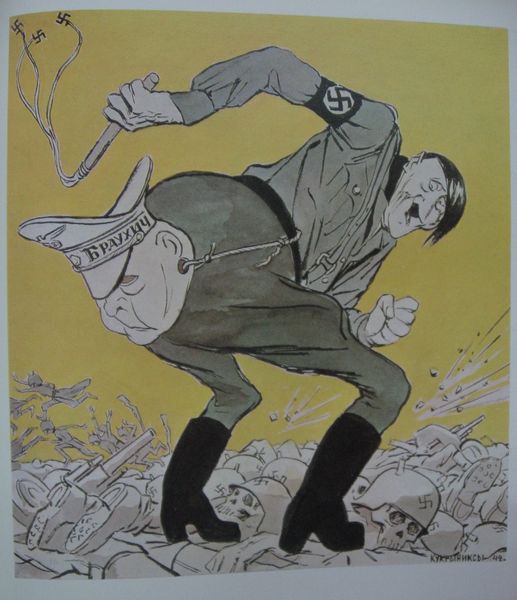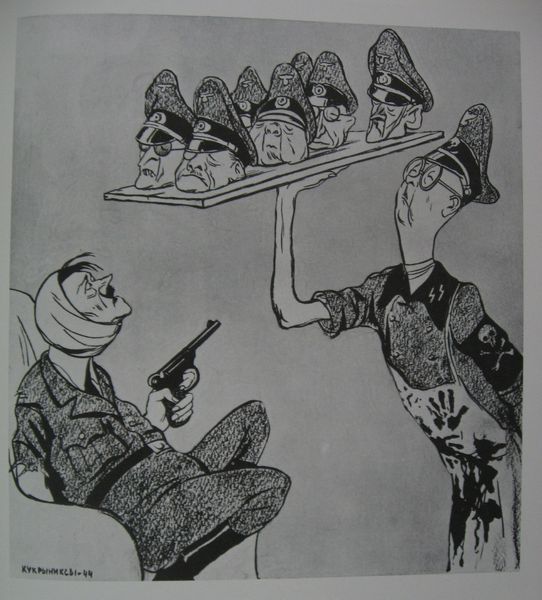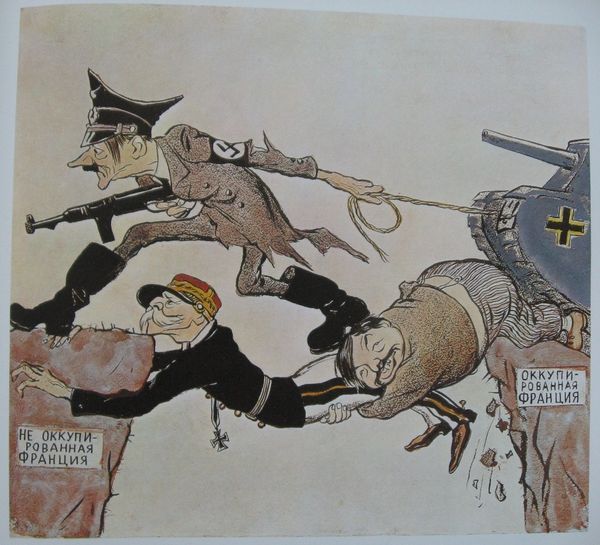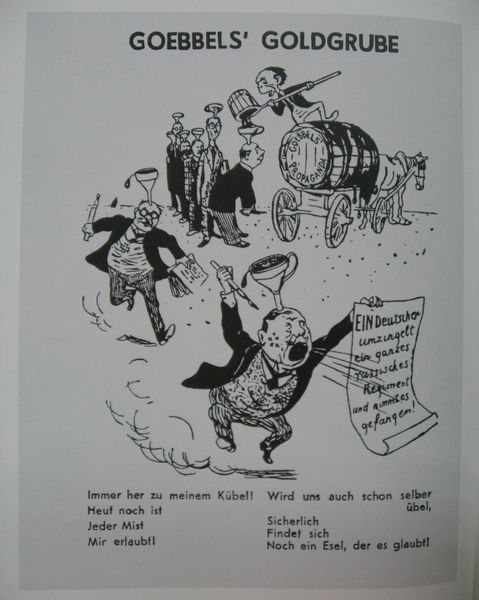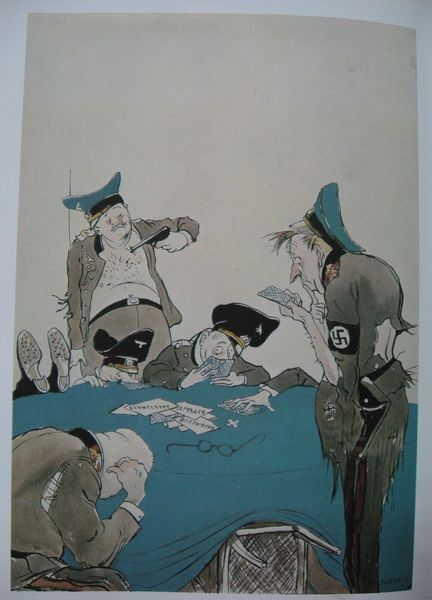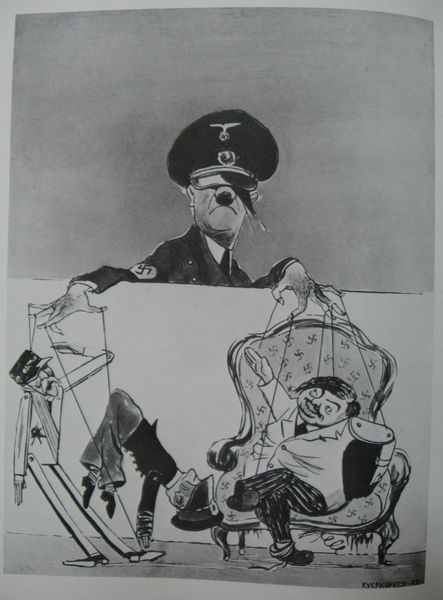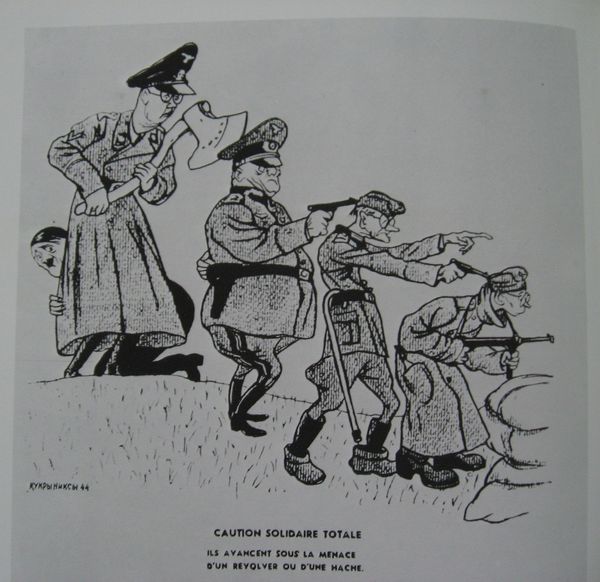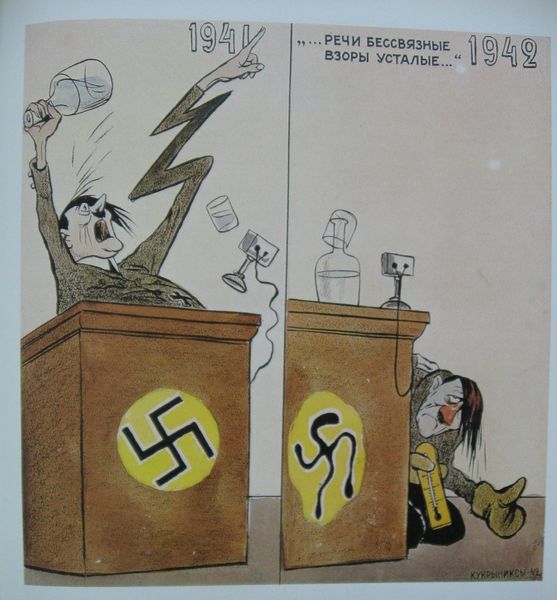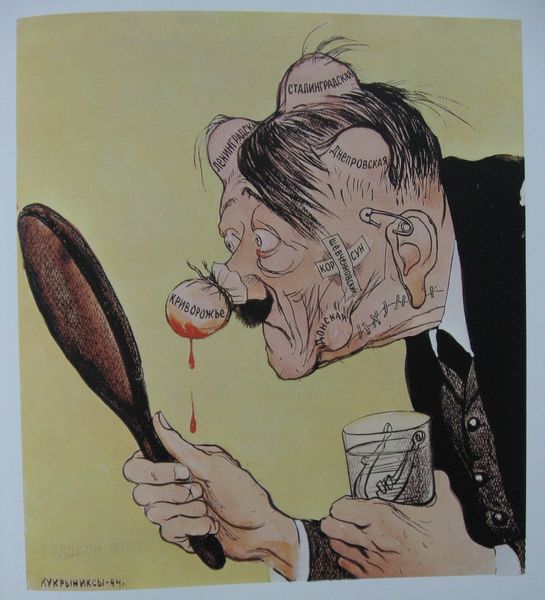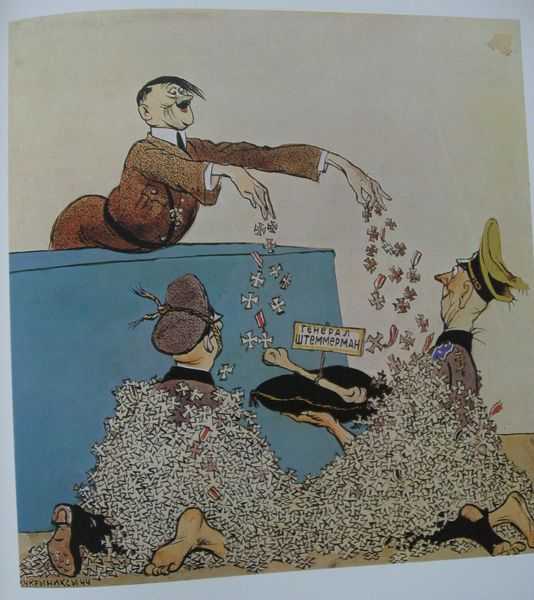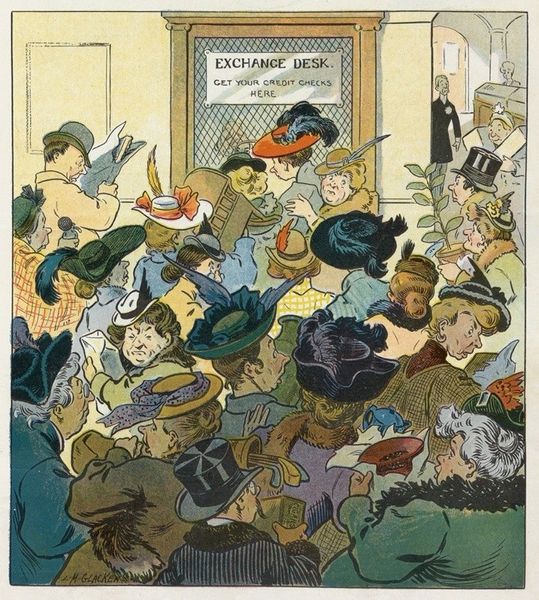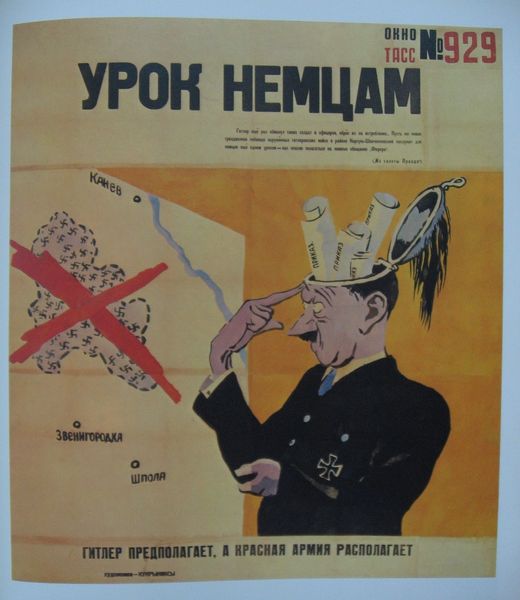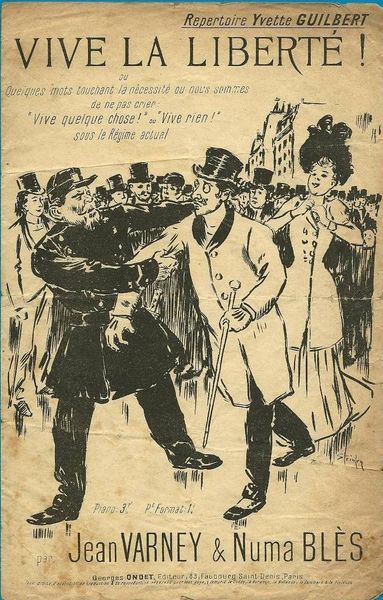
Copyright: Kukryniksy,Fair Use
Curator: Ah, yes, this bold poster, "Two Pots (TASS Window № 1027)," comes to us from 1944, part of a series created by the Soviet artists known as Kukryniksy during World War II. It's a striking example of agitprop. Editor: Striking is…one word for it. My initial impression is one of stark contrast. A gloomy void above, and then this chaotic cauldron scene below, practically bubbling with miniature…are those Nazis being stirred like soup? Curator: Precisely! Kukryniksy used a piercing cartoon style. The “empty pot in Berlin” refers to Hitler's hollow ambitions. Note the rats scurrying around, hinting at decay. The lower scene… well, that’s the Russian pot near Minsk, where the Nazis are getting thoroughly cooked, depicted rather graphically if I may say. The red star is certainly…unmissable. Editor: The visual metaphors are blatant, bordering on the grotesque. But then, war isn’t subtle. This isn't high art trying to transcend conflict; it’s a propaganda weapon meant to inspire a very immediate emotional response. Does this piece tell us more about how the Soviet state wanted the war to be perceived than it does about the reality on the ground? Curator: Absolutely. It speaks to the Soviet public's resilience and resolve, but it also simplifies a complex geopolitical situation. The imagery aims for immediate comprehension, which is characteristic of poster art intended to bolster public morale. I also wonder if the sheer *stylization* – the cartoonish figures and exaggerated expressions – served as a form of psychological defense, a way to process immense trauma and turn it into something manageable, even laughable, on some level? Editor: Perhaps turning Nazis into figures of ridicule drained their perceived power? I keep coming back to that idea that the most successful war art, whether in paint or poetry, understands that to communicate the tragedy and stakes, that one must adopt and utilize symbols which speak clearly across demographics. Curator: In retrospect, pieces like these, they're more than mere artifacts; they serve as complex time capsules embodying those feelings that are all part and parcel of the human condition. Editor: Yes, it is indeed chilling to consider the complex story woven into this singular, graphic image, reminding us that this dark humor served a real-world purpose.
Comments
No comments
Be the first to comment and join the conversation on the ultimate creative platform.
